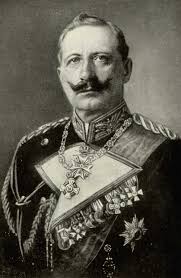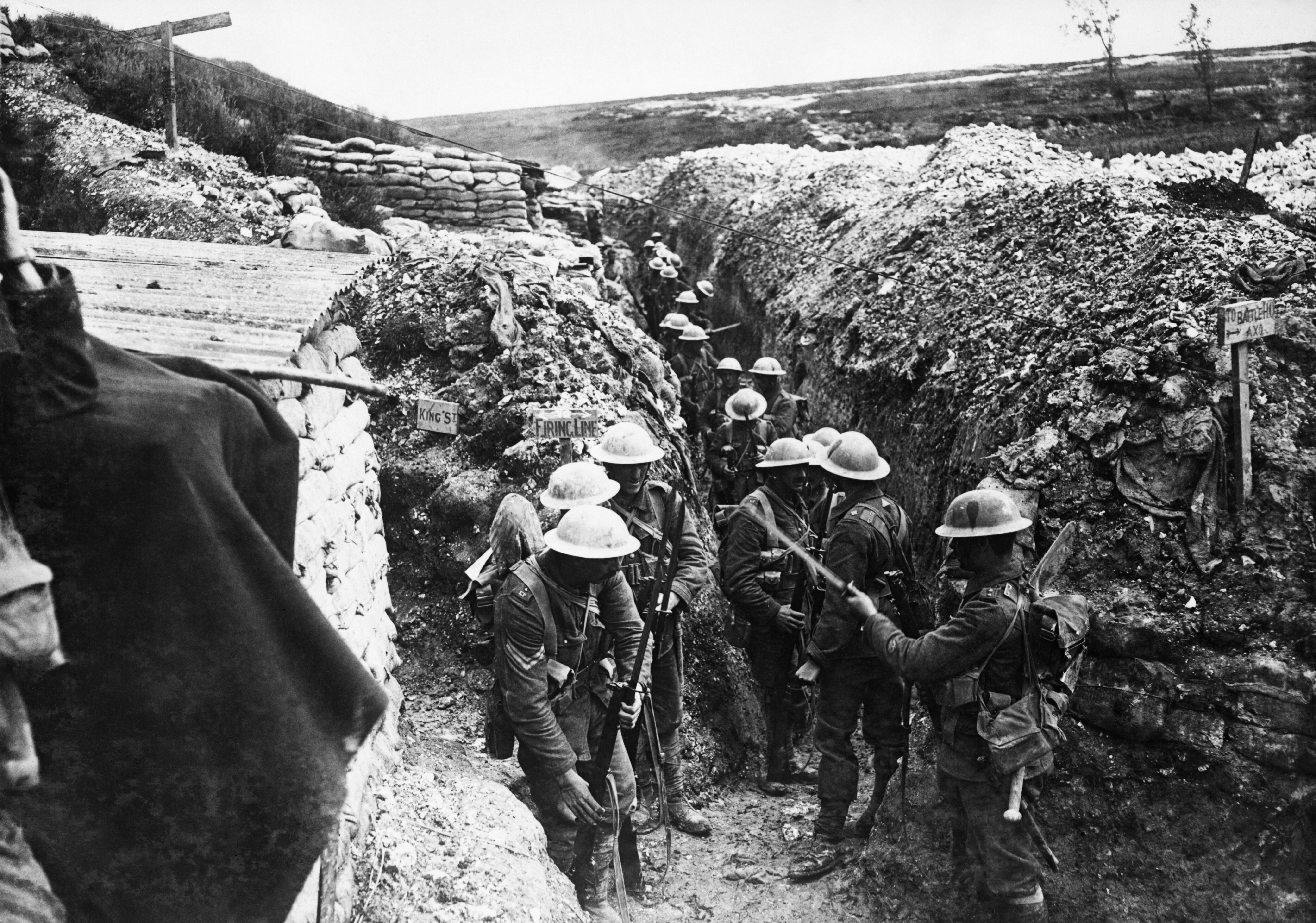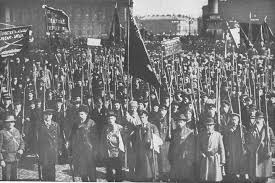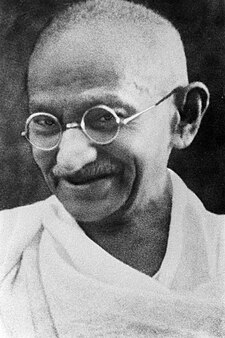ry@
Section 2
Working together using this wiki
Think of this wiki as a shared online whiteboard. The entire class can share information using this wiki, making your research accessible to everyone. You will not have to complete the IDs all by yourself! Play around with this wiki: Notice how you can add comments to a page, see what people have changed, and edit all the text.
How to add your information to this wiki...
- Click on the Edit tab at the top.
- Scroll down to your term and copy and paste your information. (Be sure to add your name after the term)
- Use the right toolbar to insert images and files (be sure to keep your images small - we are all sharing this page)
Use this checklist to check your work: (I use this list to grade your wiki)
- Add your name next to the term/concept you are responsible for (5 pts)
- Underline the term/concept - make it bold or heading 2 size (5 pts)
- Brief summary of term/concept - use bullets or highlight key points (55 pts)
- Picture/map - must include caption (keep image small in size) (image = 15 pts; caption =10 pts)
- Please provide a FULL citation for the source(s) used - www.citationmachine.net can help. (5 pts)
- Post your info in the right location - instead insert your image with caption right under your content. (5 pts)
You are responsible for ONE term this week.
- When you are done, hit Save at the bottom and view your work (make changes (Edit) as necessary).
- TIP: only one person can edit this wiki at a time, so I suggest you create your entry in a word program first. Then you can simply copy and paste it right in when the wiki is available for edit.
Identifications - World War I and the Crisis of European Global Order (ch. 28)
Wilhelm II -
Triple Alliance -Leya Wood
Alliance among Germany, Austria-Hungary, and Italy at the end of the 19th century; part of European alliance system and balance of power prior to WWI.

Here is a map of the Triple Alliance Countries.
http://www.learningcurve.gov.uk/greatwar/g2/images/g2s1bg.jpg
Triple Entente -Leya Wood
Alliance among Britain, Russia, and France at the outset of the 20th century; part of European alliance system and Balance of power prior to WWI.
Here is a map of Europe during WWI. it shows the Triple Entente Countries.
http://www.learningcurve.gov.uk/greatwar/g2/images/g2s2bg.jpg
Anglo-German Naval Race -Crystal Tsang
-
British navy vs. German navy
-
German was a rising power and went to rebuild their navy
-
Britain was weak especially after the Boer War
-
Germany's new navy consisted of 19 battleships, 42 cruisers, and other assorted ships
-
German naval force was lot stronger than the British navy after the improvements
-
Germany became Britain's main enemy for powers
-
Anglo-German Naval Race was also a book
 Plugin error: That plugin is not available.
Plugin error: That plugin is not available.
This is a picture of a British Ocean Liner.
Source: “The Anglo-German Naval Race.” The Ocean Liner. 12 March 2009. http://www.ocean-liner.com/nationalism/anglo-german-rivalry
Schlieffen Plan - Lauren Sink
· Strategic plan by the German General Staff for victory on the west and east against France and Russia
· Took advantage of the differences in the countries’ speeds in preparing for war
· Not fully carried out in the beginning of WWI
· German offense ended and years of warfare followed
· Created by Count Alfred von Schlieffen
· Modified by Helmuth von Moltke the Younger after Schlieffen's retirement
· Moltke put the plan into action
 Count Alfred von Schlieffen came up with the original strategic plan.
Count Alfred von Schlieffen came up with the original strategic plan.
The Balkans ("powder keg"): -Rishi Simha The Balkans is a term that refers to the Southeastern European countries of Albania, Bosnia and Herzegovina, Croatia, Kosovo, Macedonia, Montenegro, and Serbia. In 1914, Europe was relatively peaceful, but strong nationalism existed everywhere. Europe was referred to as the “powder keg” because, left alone, powder kegs are harmless, but it only takes a small fuse to light it causing an enormous explosion. The assassination of Archduke Franz Ferdinand by a Serbian terrorist in Sarajevo was the spark that eventually led to World War One’s outbreak. Since Sarajevo is in the Balkans, it, too, is referred to as a “powder keg.”
 This is Gavrilo Princip. He assassinated the Archduke Franz Ferdinand, lighting the fuse of the powder keg.
This is Gavrilo Princip. He assassinated the Archduke Franz Ferdinand, lighting the fuse of the powder keg.
Balkans Region." U.S. Department of State. 12 Mar. 2009 <http://www.state.gov/p/eur/rt/balkans/>.
"Balkans Region." U.S. Department of State. 12 Mar. 2009 http://www.state.gov/p/eur/rt/balkans/.
Archduke Ferdinand assassination, Serbian Ultimatum and Germany's "blank check" – SanMartin
· Archduke Ferdinand and Archduchess Sofia were both assassinated in Bosnian, Sarjevo 1914. The culprit Gavrilo Princip. This 19 year old thought the death of the heir to the Austrian-Hungary Empire would be the key to freeing his people and country of Serbia from Austrian-Hungarian rule.
· Following the assassination Austria-Hungary waited three weeks to reply to the incident. After this time it sent an a list of demands to the Kingdom of Serbia. Giving Serbia till July 25, 1914 at 6 p.m. a chance to response to the ultimatum, however Austria-Hungary demanded that all the demands be agreed on. With most of the demands of the ultimatum agreed upon it looked as if all would be settled, but Serbia did not agree to allow Austria to perform its own private investigation into the assassination, and did not agree to allow Austria-Hungary to view all of their files.
· Back tracking to July 5, 1914 Kaiser Wilhelm II of Germany pledges Germany’s unconditional support for whatever action Austria-Hungary undertakes even if Russia, who’s Czar was Nicholas or Wilhelm’s cousin. However he would need to consult the German counsler Theobald von Bethmann Hollweg, after the meeting the decision was made that Germany would do as Wilhelm had promised and give full support to Austria-Hungary. The Blank-check refers to the unconditional support even if Russia were to be involved in the war.


Kaiser Wilhelm and Czar Nicholas leaders in of two opposing countries. Wilhelm, as Kaiser of Germany was tied to the Triple Alliance and Czar Nicholas of Russia was binded to the Triple Entente
(2004). CZAR NICHOLAS II . Retrieved March 18, 2009, from Russian Nobility Association in America Web site: www.russiannobility.org/Default.asp?page=22
The Austrian Ultimatum to Serbia and the Serbian Reply. Retrieved March 18, 2009, Web site: http://web.jjay.cuny.edu/~jobrien/reference/ob17.html
The Western Front (trench warfare)-Shampa Panda
-Military strategy where two sides fight "entrenched" in their positions, making little land gain and losing many lives
-Defense oriented, used primarily on the Western front in World War I
-Trenches enclosed by barbed wire, frequently hit with long range cannon fire and chemical warfare such as mustard gas
-Switch from napoleaonic tactics to modern warfare
-Consisted of three parallel lines, with soldiers rotating between the lines
"Trench Warfare." Wikipedia. Wikipedia. 12 Mar 2009 <http://en.wikipedia.org/wiki/Trench_warfare>.

Soldiers in the trenches of World War I, waiting to rush out into "no man's land".
Others Fronts - Alexandra Bauer
· Though the trench warfare of the Western front in WWI is the most remember scene of WWI there were also many other fronts to the war
· The Eastern Front
o The Eastern Front is the most significant of the other fronts in WWI
o The war on the Eastern Front continued brutally as the Western Front had reached a stalemate
o The Eastern Front stretched from Saint Petersburg to the Black Sea, a distance of 1,200 kilometers
o Unlike in the Western Front, trench warfare did not develop in the East
o The greatest advance of WWI was made by the Germans on the Eastern Front
o The majority of the fighting on the Eastern Front was between a combined force of German and Austrian-Hungarian troops and then Russian troops
o The economic strain of the war on Russia created a financial collapse in the kingdom
o As a result of Russia’s involvement in the Eastern front of the war, the Tzar of Russia was overthrown in the Revolution of 1917
· Southern Theatre
o The southern theatre of the war took place in the Balkans and the Ottoman Empire
o The Austrians first invaded Serbia , their original reason for a declaration of war, with only a limited number of troops and they were quickly driven out during the Battle of Kolubara
o However, Austrian provinces soon fought and conquered Serbia once again.
o Allied intervention in the conquering of Serbia was prevented by a pro-German Greek king who made it difficult for the Allies to intervene
o Meanwhile, the Ottoman Empire entered into the war as a Central power with the secret Ottoman-German alliance in 1914.
o Fighting broke out in the Middle East between the Ottoman Empire and various Allied powers
o A combination of Arab revolts and a defeat of the Ottoman forces at the hands of the Russians declared the official collapse of the Ottoman Empire as a result of WWI
o In Italy, the Italians, who had previously been allied with the Austrian-Hungarian and German Empires declared Austria-Hungary to be the aggressor and joined the Allied powers.
o Another key Southern Front to WWI was the amount of fighting in India during the war.
o Indian Independence movements became violent during the war and drew a good deal of British attention away from the vital Western Front, to concentrate on repressing their colony.
· Naval War
o Prior to WWI, Germany had cruisers deployed throughout the world
o Those cruisers became involved in a series of battles with the British Royal Navy and with French and Russian cruisers
o In retaliation to the naval attacks, Great Britain initiated a successful naval blockade of the German Empire
o The largest naval battle of the war took place in 1916, The Battle of Jutland, as it was the only true battle between naval ships. The German ships would have been defeated by the much larger and better equipped British navy, if the Germans hadn’t managed to slip away. The battle was called as a stalemate
o Another key factor to the naval war of WWI was the United States involvement in WWI as a result of the German sinking of the passenger ship, the Lusitania.
o Throughout the war, German U-Boats played a vital role in trying to cut British and American supply lines
"World War I." Wikipedia. 14 Mar 2009. Wikipedia Online Encyclopedia. 15 Mar 2009 <http://en.wikipedia.org/wiki/WWI#Southern_theatres>.
 This is a picture of the Eastern Front during WWI. It is noted that the lines are not those of trenches as in the West. The Eastern Front divided and destroyed the Russian Empire.
This is a picture of the Eastern Front during WWI. It is noted that the lines are not those of trenches as in the West. The Eastern Front divided and destroyed the Russian Empire.
Home fronts in Europe- Matt Myers
· A war with as much magnitude as WWI is bound to have many far-reaching effects on the nations that support it.
· The bad:
o The most obvious effect would be the absence of millions of men from every aspect of society. (government, the family, the workforce, etc.)
§ This shortage had many detrimental effects to the economies of the participant nations.
o Wars cost a lot of money, which put a hefty strain on the economies of the nations.
o The war was fought on the European continent, on the home front itself.
§ This means that much property was laid in waste.
o Millions of men never returned home, creating severe work shortages in many areas.
· The good:
o The absence of so many men led to the women’s increased role.
§ She was now needed even more in the factory, family, and many other aspects of society.
o War is business, and so while the government did have to pay a lot to wage the war, the war in turn provided jobs which led to increased consumer spending and an economic upturn all around.
o Most importantly, the war united the people on the home front.
§ Throughout the past several centuries, European nations were riveted by revolutions and internal strife.
§ This war allowed the people to see themselves as part of a common effort- making their little squabbles seem insignificant.

The largest effect of WWI on the home front was in the death of millions of brave men.
Sources:
Wikipedia. 2009. 12 Mar 2009 http://en.wikipedia.org/wiki/World_War_I.
Submarine Warfare -
New Weapons of WWI (examples)-
Turkish Massacre of Armenian Civilians -Sara Marshall
-->This event took place in the declining years of the Ottoman Empire.
-->The Middle East and Europe was torn up by this event.
-->It is often referred to as the "Armenian Genocide." (Or Armenian Holocaust)
-->The Turks targeted all minority groups, and killed millons of Armenians. (Especially Christians.)
-->Assyrians and Greeks were under great attack as well.
-->April 24, 1915 marked the beginning of the Genocide. (That day 250 Armenians were arrested.)
-->Armenians were forced from their homes, forced to walk hundreds of miles in the Syria desert, and did not receive food or water.
-->The Armenian Genocide is the 2nd most studied genocide in the history of the world.
Adalian, Rouben. "Armenian Genocide." 12 Mar 2009 <http://www.armenian-genocide.org/genocide.html>.

This is a map of the location sights and the spread of the Armenian Genocide during and after World War I.
US Entry to the war (Sarah Mann)
- The U.S. first followed isolationism
- A German U-boat sank the luxury ocean liner Lusitania (1915) that had 128 Americans on board – the U.S. demanded Germany stop attacks on passenger ships – Wilson warned the U.S. wouldn’t allow unrestricted submarine warfare
- Germany caused the Black Tom explosion in Jersey City, New Jersey, and the Kingsland Explosion in Lyndhurst, New Jersey, which were both factors that led to U.S. entry
- The British secret Royal Navy intercepted the Zimmermann Telegram that asked Mexico to be Germany’s ally if the U.S. joined the war – in return Mexico would get Texas, New Mexico, and Arizona
- After the Zimmermann Telegram was publicized, Congress declared war on Germany April 6, 1917
- A propaganda campaign by the Committee on Public Information aimed to increase support for the war
- The U.S. was never a formal member of the Allies but drafted many men and sent them to France – they also sent a battleship, destroyers, and submarines to join the British Grand Fleet
 February 3, 1917 – Wilson announces to Congress the break of relations with Germany
February 3, 1917 – Wilson announces to Congress the break of relations with Germany
"World War I." Answers.com. 2009. Answers Corporation. 10 Mar 2009 http://www.answers.com/topic/world-war-i.
T.E. Lawrence of Arabia- (Brianna Kosko)
-
Who: T.E. Lawrence’s full name was Thomas Edward Lawrence
-
What: He was a British soldier renowned for his liaison role during the Arab Revolt.
-
When: The Arab Revolt occurred from 1916 to 1918.
-
Where: The Arab Revolt occurred in the Middle East, as is where Lawrence’s studies and main interests were found.
-
Why: He is known as “Lawrence of Arabia” because of his writings, activities, and associations with the Middle East during World War I.
-
How He’s Important: T.E. Lawrence of Arabia was important as a writer who expressed the views and images he saw in the Middle East.
http://www.lucidcafe.com/library/95aug/lawrence.html

This is a picture of T.E. Lawrence of Arabia.
Paris Peace Conference (include leaders)
Treaty of Versailles - Cory Hume
The Treaty of Versailles was a peace agreement at the end of World War I. It ended the war between Germany and the Allied Powers and was signed on 28 June 1919. The other Central Powers on the German side of World War I were dealt with in separate treaties. It took six months of negotiations at the Paris Peace Conference to finish the peace treaty. The treaty required Germany and its allies to accept responsibility for causing the war and to disarm and pay reparations to certain countries. Germany was not pacified, conciliated or permanently weakened. This would prove to be a factor leading to later conflicts, World War II being an excellent example.

This is a photo of the actual signing of the Treaty of Versailles.
":The Treaty of Versailles::." ::History Learning Site::. 15 Mar. 2009 <http://www.historylearningsite.co.uk/treaty_of_versailles.htm>.
League of Nations - Shelly Franks
v Part of the Treaty of Versailles
v Proposed by President Woodrow Wilson
v Part of Wilson’s Fourteen Points Plan
v Goal was to prevent war from happening
v The United States wasn’t part of the League
v Great Britain and France were the two super powers in it
v The League had no military to put down arguments
v Successful in adverting wars in the border disputes between Bulgaria-Greece (1925), Iraq-Turkey (1925-26) and Poland-Lithuania (1927).
v The League of Nations also had noticeable success in the areas of drugs control, refugee work and famine relief.
v The League did not meet during WWII
v In 1946 they turned all their responsibilities over to the United Nations
"Spartacus Educational." Spartacus 12 Mar 2009
http://www.spartacus.schoolnet.co.uk/FWWleague.htm.

Picture of Woodrow Wilson. http://www.qcms.org/images/woodrow_wilson_image.jpg
Germany’s War Repayments-Kelly Best
- Approximately 1,808,000 dead, 4,247,000 wounded, 618,000 prisoner (Highest number dead and prisoner, second-highest number wounded)
- Allowed no part in drafting the Peace if Paris and other treaties
- Had to pay money to allies
- German representatives insulted
- Land divided and taken away
- Suffered awful Inflation
- Still blamed for WWI
Stearns, Peter N. World Civilizations. Fourth AP. New York, NY: Pearson Longman, 2006.
"The Seeds of Evil: The Rise of Hitler." Schools History. 04 June, 2004. Schools History. 27 Mar 2009 http://www.schoolshistory.org.uk/ASLevel_History/reparations.htm.
"Treaty of Versailles." Wikipedia. 27 Mar 2009 <http://upload.wikimedia.org/wikipedia/commons/b/b8/Treaty_of_Versailles%2C_English_version.jpg>.

This document insisted that Germany pay the reparations it did
Spanish flu of 1918-Estefania Delgado
- It was an influenza pandemic that spread to nearly part of the world.
- It was caused by an unusually severe and deadly Influenza.
- Historical and epidemiologic data are inadequate to identify the geographic origin of the virus.
- Most of its victims were healthy young adults, in contrast to most influenza outbreaks, which predominantly affect juvenile, elderly, or otherwise weakened patients.
- The pandemic lasted from March 1918 to June 1920 spreading even to the Arctic and remote Pacific islands.
- It is estimated that anywhere from 20 to 100 million people were killed worldwide or the approximate equivalent of one third of the population of Europe which is more than double the number killed in World War I.

this is a poster communicating of the Epidemic Influenza
http://virus.stanford.edu/uda/
Russian Revolution (overview; relate to WWI) - Michael Decker
The Bolshevik Revolution broke out in the streets of St. Petersburg in 1917. What began as a food riot turned into a revolution fueled by people upset with an unresponsive political system and undue hardship placed on them as a result of the early industrial revolution. A council of workers took over control of the government after the tsar abdicated, realizing his soldiers were unreliable. The Bolshevik Revolution was a time when communism triumphed over liberalism. The rest of the world faced a red scare, fearing that communism would spread to their own governments, much the same as the continent reacted to the French Revolution.

The Bolsheviks, led by Lenin, gained a majority role in the leading urban soviets. They led the way for revolution.
Indian National Congress -Tyler Cornett
· The party was founded in 1885 by Scotsman Allan Octavian Hume.
· The party disagreed with the government many times and split into two factions, the Naram Dal and the Garam Dal.
· The Garam Dal were the faction that supported the independence movement more strongly, while the Naram Dal were more moderate.
· The congress then came to unite millions of Indians who opposed the British rule.
· Some of India’s most famous rulers belonged to this party, such as Dadabhai Naoroji, Gopal Krishna Gokhale, Jawaharlal Nehru and Mohandas Gandhi.
· Gandhi led a passive resistance movement in the 1920s against the British rule.
· Thanks to this, India achieved independence in 1957.
· The party remained in power for the majority of years afterwards until the late 20th century.
· The Congress has now come back to power in 2004.

The symbol for the Indian National Congress.
"Indian National Congress." Encyclopedia Britannica. 12 Mar 2009 <hhtp://www.brittanica.com/EBchecked/topic/285841/Indian-National-Congress>.
Mahatma Gandhi -Alison Chang

Mohandas Karamchand Gandhi, pictured in the 1930s
Mohandas Karamchand Gandhi (2 October 1869 – 30 January 1948) was a major political and spiritual leader of India and the Indian independence movement. He was the pioneer of satyagraha—resistance to tyranny through mass civil disobedience, firmly founded upon ahimsa or total non-violence—which led India to independence and inspired movements for civil rights and freedom across the world. He is commonly known around the world as Mahatma Gandhi . He is officially honoured in India as the Father of the Nation; his birthday, 2 October, is commemorated there as Gandhi Jayanti, anational holiday, and worldwide as the International Day of Non-Violence.
Gandhi first employed non-violent civil disobedience as an expatriate lawyer in South Africa, in the resident Indian community's struggle for civil rights. After his return to India in 1915, he set about organising peasants, farmers, and urban labourers in protesting excessive land-tax and discrimination. Assuming leadership of the Indian National Congress in 1921, Gandhi led nationwide campaigns for easing poverty, for expanding women's rights, for building religious and ethnic amity, for ending untouchability, for increasing economic self-reliance, but above all for achieving Swaraj—the independence of India from foreign domination. Gandhi famously led Indians in the Non-cooperation movement in 1922 and in protesting the British-imposed salt tax with the 400 km (249 mi) Dandi Salt March in 1930, and later in calling for the British to Quit India in 1942. He was imprisoned for many years, on numerous occasions, in both South Africa and India.
http://en.wikipedia.org/wiki/Mahatma_Gandhi
Balfour Declaration - Colin Breheny
The Balfour Declaration was a series of two British policies trying to achieve the establishment of Palestine as a Jewish homeland. The first policy was a letter sent by Lord Arthur Balfour adressed to Baron Rothschild hence the name the Balfour Delcaration of 1917. This was followed by The Balfour Declaration of 1926, which lead to the gradual independence of Canada.
Ataturk -
Revolt in Egypt, 1919 - Jenny Borowski
- In September of 1918, Egypt made it's first attempt to voice it's demands
- November 13, 1918; Leaders met with the British high commissioner. They demanded complete independance except for the supervision of the Suez Canal.
- March 13; Between 150 and 300 women demonstrated with the men. This was the first entrance of egyptian women in public life.
- More than 10,000 teachers, students, workers, etc gathered to march against the British.
- The British high commissioner tried to make the government listen to the Egyptians.
- Milne Cheetham became high commissioner, but realized he could do nothing to stop the demonstrators.
- General Edmund Allenby replaced Cheetham as high commissioner. He traveled to Egypt and convinced the people to stop demonstrating. He eventually persuaded the British government to comply.

General Edmund Allenby- He resolved the Egyptian conflict.
"Egypt Revolution 1919." On War. 16 Dec 2000. 23 March 2009. <http://www.onwar.com/aced/data/echo/egypt1919a.htm>.
Woodrow Wilson and the 14 Points- Laura Guidry
Woodrow Wilson was America’s president during WWI. His 14 points were created as a proposal to end the war. The speech was delivered on January 8, 1918 and they became the basis for the League of Nations. The points included consequences due to the war.
"Modern History Sourcebook: Woodrow Wilson: Fourteen Points, 1918." FORDHAM.EDU. 14 May 2009 <http://www.fordham.edu/halsall/mod/1918wilson.html>.

Woodrow Wilson, the American president who presented the 14 Points.
http://www.americaslibrary.gov/assets/jb/reform/jb_reform_wilson_1_e.jpg
Comments (0)
You don't have permission to comment on this page.